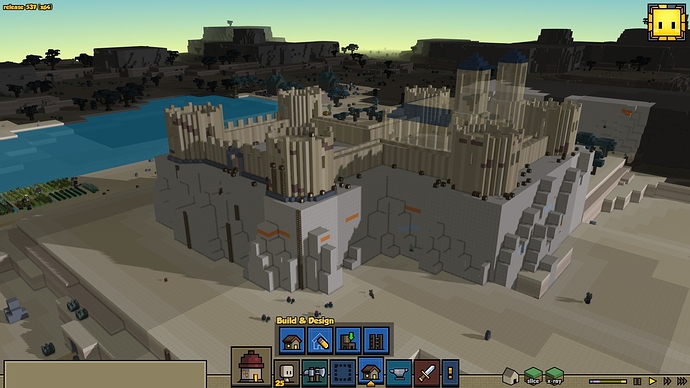Just so everyone is on the same page:
The issue with walls is, as far as I know, entirely related to the case where you have a big room which is parted in two by a inner wall. Now the question “when does a wall cease to be a wall” actually is, “is it two rooms devided by an partitioning wall, or is it just one big room which has a bunch of voxels in it that look like a partitioning wall?”. This is important for the game, since the first option allows the roommoving tool to move the rooms separately, while the latter option does not.
It doesn’t matter that everything is in the end understood as ‘voxels’, instead of ‘walls’ or ‘floors’. It is also not a matter of what can be called a wall (a semantic discussion; putting a word on it), and what should instead be considered modern art, or some other thing. The entire reason you need to know what a wall is, (and when it isn’t), is because the wall definition is needed for the room definition. So the question would really become, “if there is a partitioning wall separating one room in two, then what criteria does that bunch of voxels have so that both I and the game agree that that bunch of voxels makes the two rooms separate?”
This is the light in which I made the first wall definition suggestion, but @yetichow’s mention that it needs to touch the floor at some place is a good suggestion. Although I don’t know how well that works if radiant removes the door margins. If they do, and they might because its been complained about in some other thread that I’m too tired to link in now, you could have a wall with doors along its entire length, and it would look like a wall, but be no different than the free-standing partition that Yetichow describes.
On the matter of holes, don’t forget that windows and doors punch holes in the walls (those voxels would get earased). It is thus highly unlikely that a wall will have the bottom row of voxels completely filled in (just an example of why I wanted ti mention it). You could argue that you could detect a window or door being placed there, but those are really just frames, and a player could decide that they don’t need that for the window/door to function as such.
To respond to @miguelbazil s idea to check wether a hearthling can pass a wall, and if yes, to not have it be a wall. There are many things I now think of that could break that (what if creatures are bigger or just waay smaller than hearthlings, can the wall still protect then, should the game account for that…), but the most important thing is that enemies won’t be able to pass through a wall with a door, but that wall does have a hole in it with a size that a hearthling could theoretically pass through.
To answer @MelOzone’s questions. 1. I would consider the ‘ruin’ walls to be a wall. if it would separate two rooms, that would not feel weird to me. Now if I were a hearthling judging a home for whether I wanted to sleep in it, I would maybe have my opinions about it, but it would still qualify as a wall, just a bad one.
2. I would also consider the upside-down U-archway a wall. In fact I would consider it especially to be a wall. Consider a wall for instance which is 7 voxels wide (just enough for a door) and 5 voxels tall (just enough for a door), and which has one door in it. Imagine it at the end of a corridor. I would, without question, consider that a partitioning wall, even though in reality, it is an archway with only two voxels (1 voxel visually scince the pillars hide behind the corridor walls) margin on the side, and one voxel on the top, and for the rest it is just a big hole where the door goes.
In fact, as far as the game is concerned, any wall with one door and no windows is mathematically speaking ( There is a fancy word for this, I can’t rememer) an archway as you describe.
It’s late so I don’t fully know how well my tone or interpretation of what was obvious was in this reply, but I don’t mean it in any way bad or know-it-all-sy. It is all very much, in my opinion. Just so you know.













